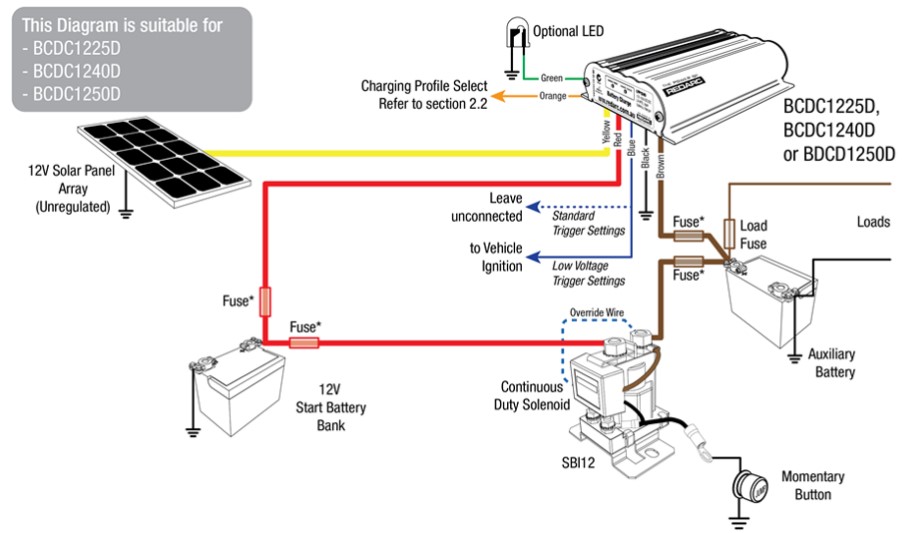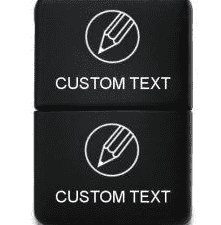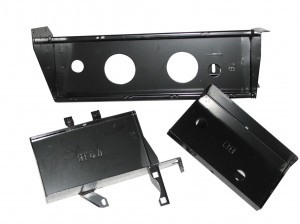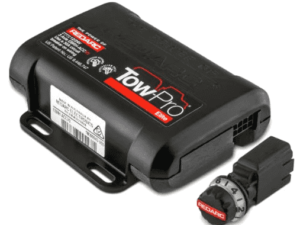Description
Dual Battery Systems To Power Up Your 4×4 Adventures
For off-road enthusiasts and tourers alike, venturing beyond the beaten path often means relying on electrical power for essential equipment like fridges, lights, and radios. A dual battery system is the answer, ensuring you have ample reserve power to run these accessories without draining your vehicle’s starting battery and leaving you stranded.
This comprehensive guide delves into the world of dual battery systems, explaining their components, installation considerations, and the different options available to best suit your needs and budget.
Why You Need a Dual Battery System
Imagine this: you reach your picturesque campsite after a long journey and camp overnight only to discover a dead car battery because your fridge has been running all day. A dual battery system prevents this scenario by providing a dedicated power source for your auxiliary equipment, completely independent of your vehicle’s starting battery.
Essential Components
A typical dual-battery system consists of:
- Second Battery: Deep-cycle or dual-purpose batteries are ideal for powering accessories due to their ability to deliver sustained power over extended periods.
- Battery Tray: This sturdy tray securely mounts the second battery in the engine bay, passenger compartment, or load area.
- Battery Isolator: This device automatically connects or disconnects the second battery from the main starting battery based on voltage levels. Options include solenoids, voltage-sensitive relays (VSRs), and more advanced electronic battery management systems (EBMs).
- Wiring and Circuit Protection: High-quality cables and appropriate fuses or circuit breakers ensure safe and reliable power delivery.
Installation Considerations
Installing a dual battery system requires careful planning and execution. Here are some key factors to consider:
- Battery Placement: Choose a location that offers protection from heat, vibration, and moisture. Common mounting points include the engine bay, passenger compartment, or load area.
- Wiring Expertise: For a safe and reliable installation, consider seeking help from a qualified auto electrician, especially for complex setups.
- Charging: Ensure your system allows the second battery to be charged by the vehicle’s alternator or through solar panels.
Choosing the Right System for You
There are various dual battery system configurations available, each catering to different needs and budgets:
- Simple On/Off Switch: This basic system offers manual control over battery isolation but requires driver intervention to prevent accidental discharge.
- Automatic Solenoid Switch: This system automatically connects/disconnects batteries based on engine operation, eliminating the need for manual switching.
- Four-Way Switch: This manual system provides ultimate flexibility, allowing you to isolate batteries or power accessories from either battery.
- Electronic Battery Management Systems (EBMs): EBMs offer automatic battery isolation and charging, often with additional features like priority charging for the starting battery and solar compatibility. This is the preferred method type of setup on most modern vehicles as you don’t need to think about it at all. It manages the charging of the battery ensuring a trouble free trip.
Battery Options: Deep-Cycle vs AGM vs Lithium
The type of battery you choose for your second battery plays a crucial role in performance and longevity. Here are the common options:
- Flooded Lead-Acid (Wet): Affordable but requires regular maintenance.
- Absorbent Glass Mat (AGM): Maintenance-free but more expensive than wet cell batteries.
- Lithium Iron Phosphate (LiFePO4): Lightweight, powerful, and long-lasting, but comes with a premium price tag.
Beyond the Basics: Understanding Advanced Systems
- Variable Voltage Charging: Modern vehicles often employ variable voltage charging systems to optimise fuel efficiency. A DC-to-DC charger is recommended in such cases to ensure proper charging of the second battery. Our preferred brand of charger for this setup is the Redarc BCDC charger. They are available in 25 or 40-amp chargers. Your current draw would dictate which charger we would recommend.
- Portable Battery Packs: For vehicles with limited space or infrequent off-road use, portable battery packs can be a viable alternative to permanently installed systems. They are available in a few different configurations. The stand-alone lithium battery with its own charger built in is an excellent choice for people that only do occasional camping and touring.
A well-designed and installed dual battery system empowers you to extend your off-road adventures with peace of mind. By understanding the components, installation considerations, and available options, you can choose the system that best suits your needs and budget. With a reliable dual battery system on board, you can focus on creating lasting memories on your off-road expeditions. We have a team of very experienced trade’s people that can have the ideal dual battery system installed in your vehicle. Typically it takes a day to install and test a system, but once done you’ll have years of hassle-free touring and camping time, making memories and not worrying if your fridge is going to drain your battery. Contact us for an obligation free consultation on what type of setup would be best for your situation.









